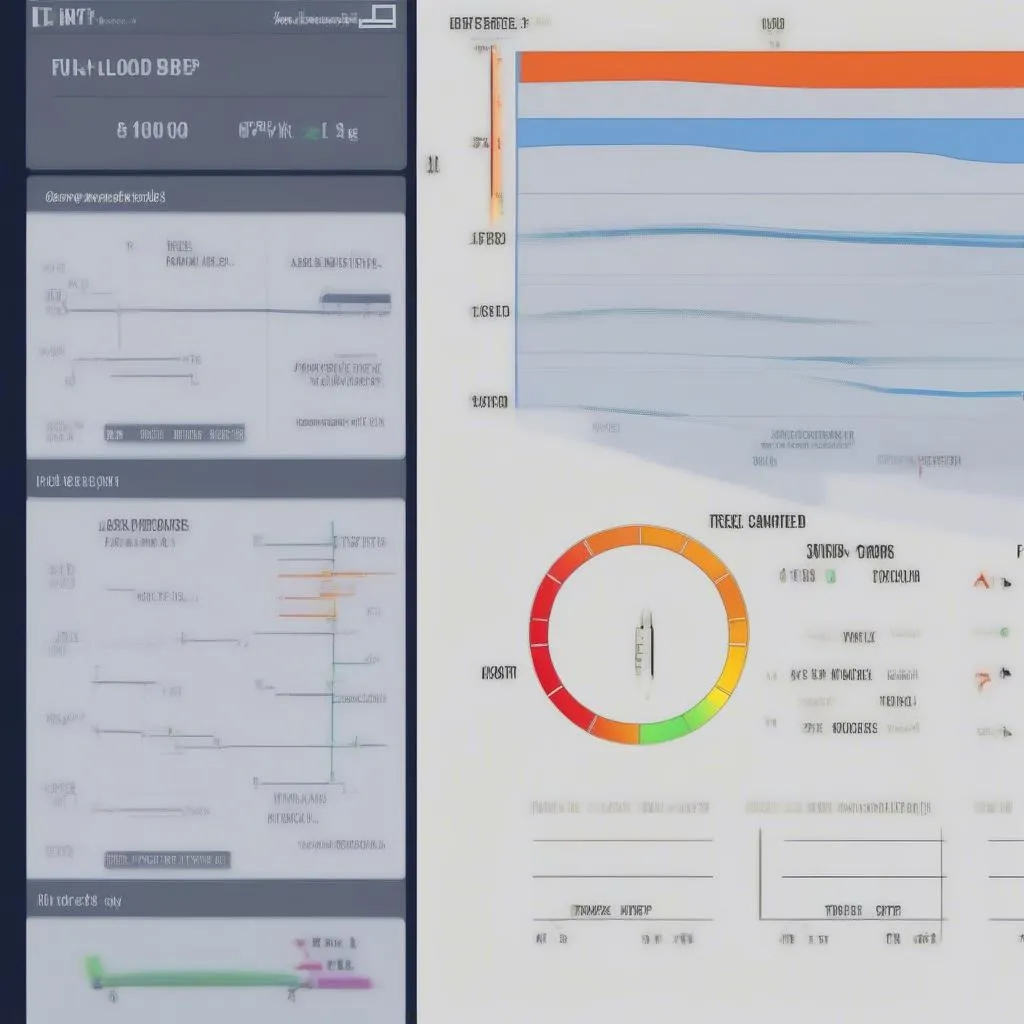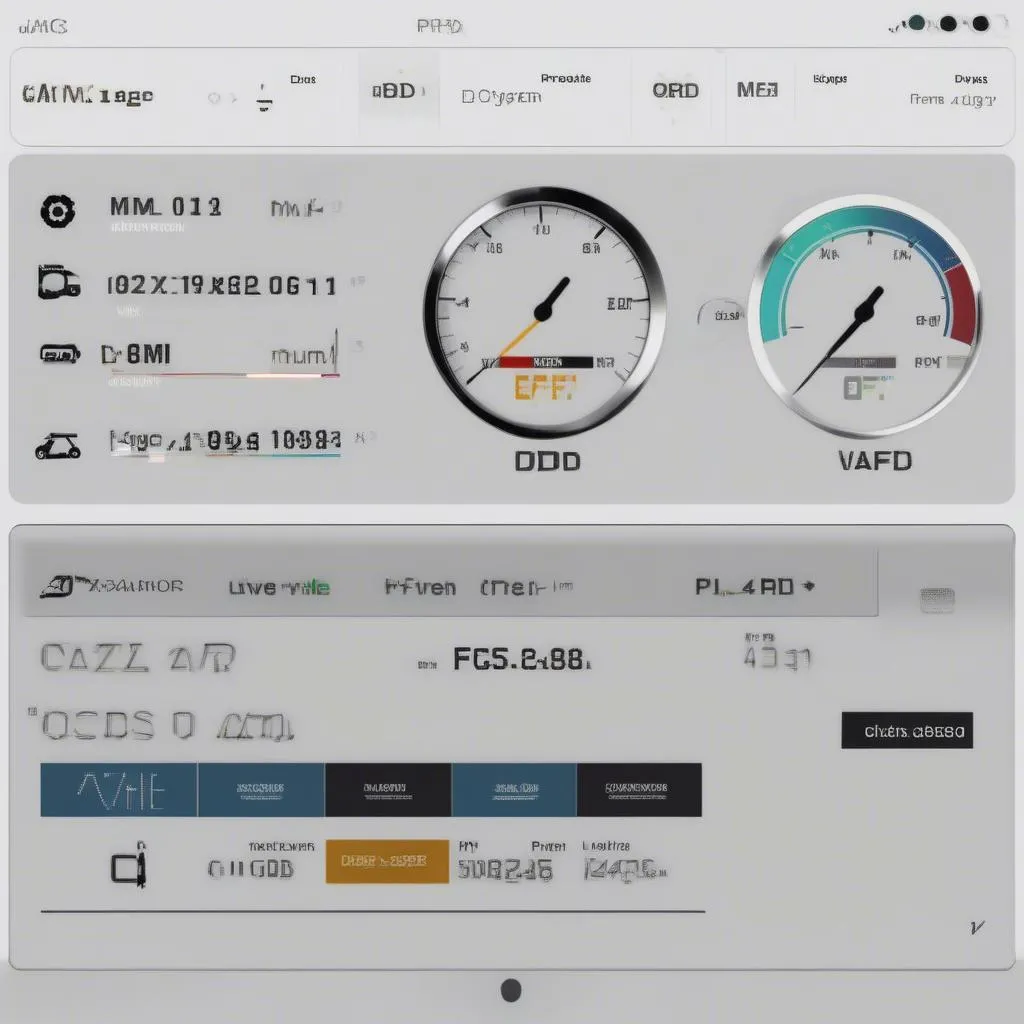Have you ever wondered what those cryptic codes displayed on your car’s dashboard mean? Or maybe you’ve been curious about the wealth of information stored within your vehicle’s onboard computer? The answer lies in understanding OBD data, a powerful tool for monitoring your car’s health and diagnosing potential problems. In this comprehensive guide, we’ll delve into the world of OBD data, exploring its significance, how to interpret it, and what it can tell you about your car’s overall condition.
What is OBD Data and Why Should You Care?
OBD stands for On-Board Diagnostics, a standardized system implemented in most vehicles manufactured after 1996. It’s essentially a communication protocol that allows technicians and even everyday drivers to access and interpret data from the car’s engine control unit (ECU). This data provides insights into various aspects of your car’s operation, including:
- Engine performance: OBD data can reveal valuable information about your engine’s efficiency, fuel consumption, and emissions levels.
- Emissions control: It helps identify potential issues with your car’s emission control system, ensuring compliance with environmental regulations.
- Drivability issues: By monitoring sensor readings, OBD data can identify problems that may cause poor performance, rough idling, or other drivability issues.
- Maintenance reminders: OBD data can trigger warning lights and alerts for scheduled maintenance, ensuring timely servicing and preventing potential breakdowns.
Interpreting OBD Data: Demystifying the Codes
OBD data is typically displayed as a series of codes, which can appear intimidating to the uninitiated. However, these codes follow a specific format and convey valuable information about your car’s health. Here’s a breakdown of how to interpret OBD codes:
DTCs: Diagnostic Trouble Codes
DTCs are the most common type of OBD code, indicating potential problems or malfunctions within your car’s systems. They consist of a letter (P, C, B, or U) followed by a number (ranging from 01 to 99).
- P: Powertrain (related to engine and transmission)
- C: Chassis (related to brakes, steering, suspension, and other chassis components)
- B: Body (related to electrical systems, comfort features, and other body components)
- U: Network (related to communication issues between different control modules)
For example, a code like P0171 indicates a problem related to the powertrain, specifically with the fuel trim system.
Freeze Frame Data
Freeze frame data captures the vehicle’s conditions at the moment a DTC is triggered. It provides a snapshot of various parameters, such as engine speed, engine load, fuel pressure, and throttle position, which can be valuable in diagnosing the root cause of a problem.
This is an example of how freeze frame data can be displayed on an OBD scanner:  Freeze Frame Data Display
Freeze Frame Data Display
Live Data
Live data provides real-time information about your car’s operating parameters. This data can be used to monitor engine performance, identify sensor readings that are outside of the expected range, and track performance changes over time.
Here’s an example of what live data can look like on an OBD scanner:  Live Data Display
Live Data Display
Using OBD Scanners for Data Access
To access and interpret OBD data, you’ll need an OBD scanner. These devices connect to your car’s OBD port, typically located under the dashboard or near the steering column. OBD scanners come in various forms, from basic code readers to advanced diagnostic tools.
For example, a dealer scanner for European cars can provide access to more detailed and manufacturer-specific data, allowing for more comprehensive diagnostics and repairs.
How to Use an OBD Scanner
Using an OBD scanner is relatively straightforward. Here are the basic steps:
- Connect the scanner: Plug the OBD scanner into your car’s OBD port.
- Turn on the ignition: Ensure the ignition is turned on but the engine is not running.
- Select the desired option: Depending on your scanner, you can select options to read DTCs, view freeze frame data, or access live data.
- Interpret the results: The scanner will display the data in a clear and understandable format.
Understanding the Data: Real-World Examples
Let’s look at some real-world examples of how OBD data can be used to diagnose and fix problems:
- Example 1: A driver notices a check engine light illuminated on their dashboard. Using an OBD scanner, they find a DTC of P0171 (System too lean (Bank 1)). This code indicates a potential issue with the fuel-air mixture entering the engine. By examining the freeze frame data, they see that the engine was running at a high load and high RPM at the time the code was triggered. This information suggests that the issue may be related to a faulty fuel injector or a leak in the intake manifold.
- Example 2: A mechanic is trying to diagnose a problem with a car that is experiencing poor acceleration. Using an OBD scanner, they monitor live data while driving the car. They notice that the oxygen sensor readings are fluctuating erratically. This indicates that the oxygen sensor may be faulty or that there is a problem with the exhaust system. Further investigation reveals that the exhaust manifold is leaking, causing the oxygen sensor to provide inaccurate readings.
Troubleshooting OBD Data: Identifying Potential Issues
While OBD data can be a valuable tool for diagnosing problems, it’s important to remember that it’s just one piece of the puzzle. Sometimes, multiple codes or unusual sensor readings may point to a more complex issue that requires further investigation.
Here are some common troubleshooting steps you can take:
- Check for multiple codes: If multiple DTCs are present, consider whether they are related or if they indicate separate issues.
- Research specific codes: Look up the DTCs in a reliable repair manual or online database to understand their meaning and potential causes.
- Verify sensor readings: Monitor live data and compare sensor readings to factory specifications to identify potential problems with individual sensors.
- Consider environmental factors: Take into account factors such as temperature, altitude, and driving conditions that may influence OBD data.
- Consult a professional: If you’re unable to identify the cause of a problem based on OBD data, it’s always best to seek the help of a qualified technician.
Frequently Asked Questions
Q: Do all cars have an OBD port?
A: Most vehicles manufactured after 1996 have an OBD port, but there are some exceptions.
Q: Can I use any OBD scanner on any car?
A: While most OBD scanners are compatible with multiple vehicles, there are different protocols and data formats used.
Q: What information can I get from OBD data besides diagnostic codes?
A: You can also access live data, freeze frame data, and even vehicle identification numbers (VINs).
Q: Can I use an OBD scanner to modify my car’s performance?
A: While some OBD scanners offer performance tuning options, it’s important to consult with a qualified technician before modifying your car’s engine control unit.
Next Steps: Taking Control of Your Car’s Health
Understanding OBD data is a valuable skill for any car owner. By learning how to interpret codes and monitor sensor readings, you can stay ahead of potential problems, reduce maintenance costs, and ensure the longevity of your vehicle.
If you’re interested in learning more about OBD data or need assistance with diagnosing your car’s health, feel free to contact us for expert support. We’re here to help you keep your car running smoothly for years to come.